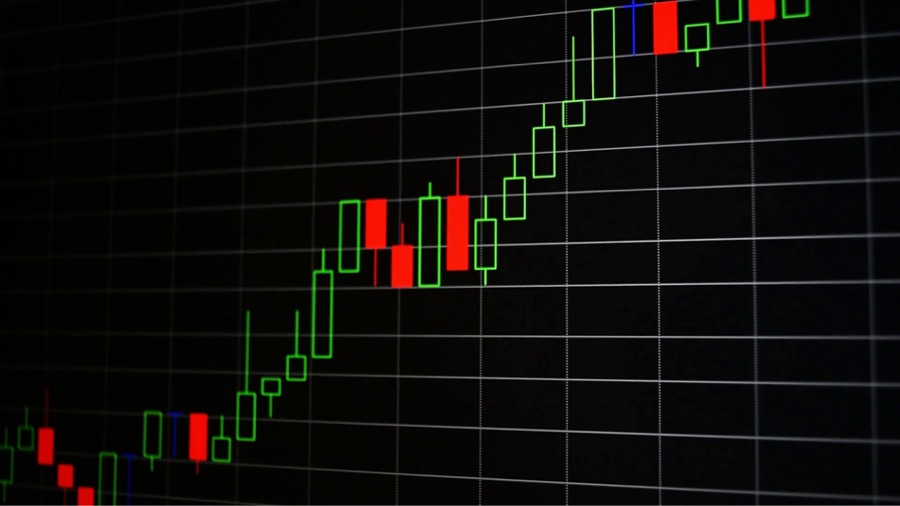The Meristem Growth Index saw an impressive 1.16% gain in January 2025, marking a continuation of its strong performance in recent months. This growth reflects heightened institutional interest in growth stocks, as large investors such as pension funds, asset managers, and foreign institutional players sought high-yielding opportunities in an evolving economic landscape. The surge in demand for equities was particularly pronounced in high-growth sectors such as technology, consumer goods, and financial services, which saw significant capital inflows.
Institutional investors capitalized on favorable macroeconomic conditions, including sustained government infrastructure spending, rising corporate earnings, and attractive valuations in select equities. Additionally, the increased participation of foreign investors, drawn by Nigeria’s high-yield environment compared to developed markets, played a pivotal role in strengthening market sentiment. The combination of these factors has provided a solid foundation for continued market gains, with investor confidence remaining resilient despite external economic uncertainties.
Key Market Performance
- Last Value: 7,424.65
- Change: +16.19 points
- % Change: +0.22% (Daily); +1.16% (January)
- Trading Volume: 32.57 million units
- Market Capitalization: ₦18.7 trillion
- Institutional Buy-to-Sell Ratio: 2.5:1 (indicating strong accumulation by institutional investors)
- Volatility Index: 13.7, reflecting moderate market fluctuations
The NGX All Share Index also reflected market optimism, gaining 1.81% in January, while the NGX 30 Index, tracking the 30 most liquid stocks, posted a 1.99% increase over the same period. These figures reinforce a broader uptrend in the Nigerian equities market, signaling renewed investor confidence in growth-focused sectors.
Additionally, liquidity remained robust, with total market turnover surpassing ₦210 billion for the month. The sustained capital inflows from foreign and domestic investors provided resilience against external economic shocks, ensuring steady upward movement across key indices.
The correlation between the Meristem Growth Index and overall market performance suggests that growth stocks continue to drive investor sentiment, especially in sectors with strong earnings potential and favorable government policies. The expanding influence of institutional investors in shaping the trajectory of growth-focused equities underscores the shift in market dynamics toward long-term capital allocation strategies.
Institutional Demand as a Key Driver
Institutional investors have been key drivers of the rally, increasing their exposure to high-growth stocks across technology, financial services, and consumer goods. The continuous accumulation of these stocks has led to strong “Buy” signals across all time frames, from short-term technical indicators to monthly trends.
Why Institutional Investors Are Pouring into Equities:
- Inflation Hedge: With inflation hitting 34.8% in December 2024, institutions are seeking assets that outpace inflation.
- Fixed-Income Uncertainty: The Monetary Policy Rate (MPR) remains elevated at 27.5%, reducing the attractiveness of traditional fixed-income assets.
- Naira Volatility: Closing at ₦1,499/USD on February 4, 2025, persistent FX instability is pushing investors toward equities as a hedge against currency fluctuations.
Sectoral and Investment Implications
The rally in the Meristem Growth Index has broader implications across key sectors:
✅ Technology & Consumer Goods: High-growth stocks in these sectors remain attractive to institutional players, benefiting from rising digital adoption and strong consumer spending.
✅ Financial Services & Banking: With higher interest rates fueling strong bank earnings, major financial stocks are seeing increased capital inflows.
✅ Fixed Income vs. Equities: The 2-Year bond yield decline to 23.61% highlights a shift in preference from fixed income to growth stocks, as investors seek superior returns.
Investor Strategy for February 2025
✔ Short-Term Investors: The momentum in institutional buying suggests further gains in growth stocks, particularly in technology, banking, and consumer sectors. Momentum traders could benefit from near-term uptrends, especially in companies that have shown strong earnings reports and rising investor confidence. Stocks with high trading volumes and strong technical indicators, such as breakout levels and moving averages, are likely to continue their upward trajectory in the short term.
✔ Long-Term Investors: Given inflationary concerns, equities remain a strong hedge. Investors should focus on companies with solid fundamentals and earnings growth potential to withstand macroeconomic volatility. Industries with robust cash flows, strong market positioning, and consistent revenue growth—such as infrastructure, fintech, and consumer staples—are well-positioned to deliver stable returns over time. Additionally, dividend-paying stocks remain attractive for long-term investors looking to generate passive income while benefiting from capital appreciation.
✔ Risk Consideration: While high-interest rates could slow borrowing for expansion-focused companies, strong liquidity flows from institutional players may offset these concerns in the short-to-medium term. Investors should be cautious about sectors highly dependent on leveraged expansion, such as capital-intensive industries, as rising borrowing costs may pressure margins. However, companies with strong balance sheets and access to alternative financing options may still thrive in this environment. Additionally, geopolitical risks, regulatory shifts, and external economic conditions should be factored into investment decisions.
Conclusion
The Meristem Growth Index’s 1.16% gain in January 2025 underscores the strong role of institutional investors in shaping market trends. As inflationary pressures persist and FX volatility remains a challenge, growth stocks continue to offer compelling investment opportunities.
Investors should watch key macroeconomic indicators, corporate earnings reports, and sectoral performance to position themselves effectively for February 2025 and beyond. The coming months will determine whether institutional demand sustains the market’s upward momentum or if economic headwinds slow down the rally.
Will institutional demand keep driving growth, or will macroeconomic risks curb investor optimism?
